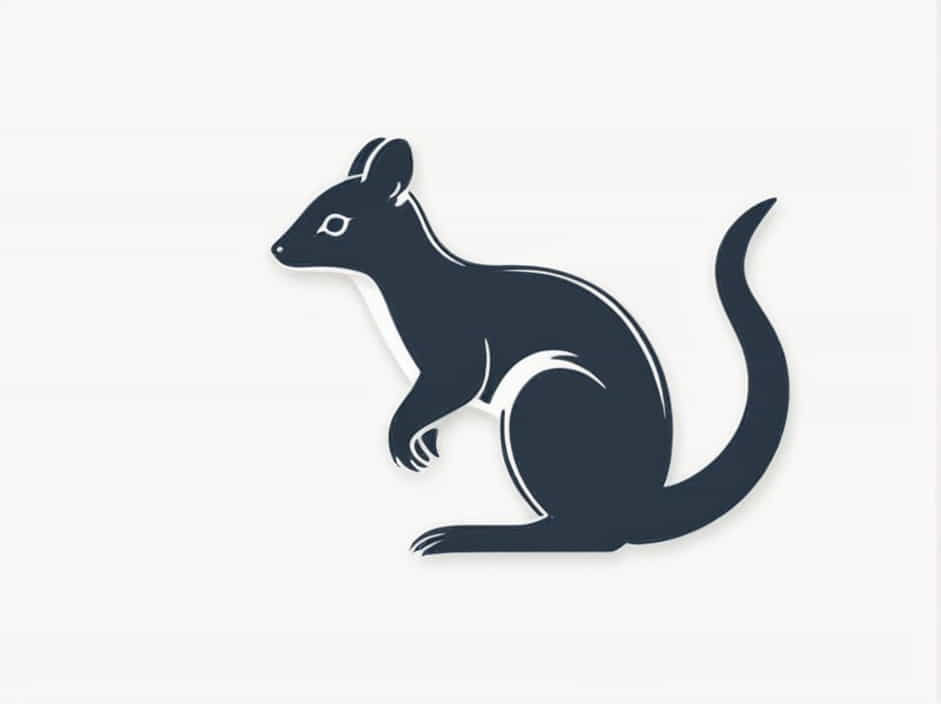Australia is home to some of the most unique wildlife in the world, and among its most iconic animals is the kangaroo. Known for its powerful hind legs, muscular build, and long tail, this marsupial is an incredible symbol of strength and agility. Kangaroos are fascinating creatures with remarkable adaptations that allow them to thrive in the harsh Australian environment.
In this topic, we’ll explore what makes the kangaroo a strong Australian marsupial with a long tail, including its physical abilities, habitat, diet, and behavior.
What Is a Kangaroo?
Kangaroos belong to the Macropodidae family, which means “big foot.” They are marsupials, meaning they carry and nurse their young in a pouch. These animals are native to Australia and are famous for their unique way of moving—hopping!
There are four main species of kangaroo:
- Red Kangaroo (Macropus rufus) – The largest and most powerful species.
- Eastern Grey Kangaroo (Macropus giganteus) – Known for its speed and agility.
- Western Grey Kangaroo (Macropus fuliginosus) – Smaller but highly adaptable.
- Antilopine Kangaroo (Macropus antilopinus) – Found in northern Australia’s tropical regions.
All kangaroos share strong muscles, long tails, and powerful legs, which make them one of the most athletic marsupials in the world.
The Strength of a Kangaroo
1. Powerful Hind Legs
A kangaroo’s hind legs are its greatest strength. These legs are designed for:
- High-speed hopping, reaching speeds of up to 70 km/h (44 mph).
- Jumping long distances, sometimes up to 9 meters (30 feet) in a single leap.
- Delivering powerful kicks, which can be deadly to predators or rivals.
2. Muscular Build
Kangaroos have a strong, muscular upper body, especially in male kangaroos. The Red Kangaroo is particularly known for its broad chest and strong arms, which it uses in fights for dominance.
3. The Role of the Long Tail
A kangaroo’s tail is not just for balance—it acts as a third leg when they walk slowly. The tail is:
- Thick, muscular, and incredibly strong.
- Used for stability when hopping and standing upright.
- Essential for fighting, helping kangaroos keep their balance while delivering powerful kicks.
This combination of strong legs, muscular arms, and a long tail makes kangaroos one of the most physically impressive marsupials in the world.
Where Do Kangaroos Live?
Kangaroos are found across Australia’s diverse landscapes, from open plains to forests and even deserts. Their ability to hop long distances allows them to travel efficiently in search of food and water.
- Red Kangaroos prefer arid regions with open grasslands.
- Eastern Grey Kangaroos are commonly found in woodlands and coastal areas.
- Western Grey Kangaroos inhabit scrublands and forests.
- Antilopine Kangaroos thrive in tropical savannas of northern Australia.
These marsupials are well-adapted to extreme weather conditions and can survive with little water for long periods.
What Do Kangaroos Eat?
Kangaroos are herbivores, meaning they eat only plants. Their diet consists mainly of:
- Grasses
- Leaves and shrubs
- Flowers and ferns
They have specialized teeth that allow them to grind tough plant material efficiently. Kangaroos can also conserve water by feeding at night when the temperature is cooler.
How Do Kangaroos Move?
1. Unique Hopping Motion
Unlike most animals, kangaroos do not walk. Instead, they hop using both legs at the same time. This method of movement is:
- Extremely energy-efficient over long distances.
- Faster than running for most animals their size.
- Supported by the tail, which acts as a counterbalance.
2. Walking with the Tail
When moving slowly, kangaroos use a method called “pentapedal locomotion.” In this movement, they:
- Use their tail like a fifth leg for balance.
- Shift their weight forward, using their front limbs for support.
This allows them to move effectively on uneven terrain.
Kangaroo Behavior and Social Structure
1. Living in Mobs
Kangaroos live in groups called “mobs,” which typically consist of 10 to 50 individuals. Mobs provide:
- Protection from predators, such as dingoes and eagles.
- Stronger social bonds, especially among females and their young.
2. Boxing and Fighting
Male kangaroos, called boomers, often engage in boxing matches to establish dominance. These fights involve:
- Standing upright and balancing on their tails.
- Throwing punches with their front limbs.
- Kicking with their powerful hind legs.
The strongest male usually becomes the leader of the mob.
3. Raising Joeys in the Pouch
Female kangaroos, called flyers, carry their young, known as joeys, in their pouches for several months. Joeys:
- Are born extremely small and underdeveloped.
- Crawl into the mother’s pouch immediately after birth.
- Stay in the pouch for up to 8 months, nursing and growing before emerging.
Even after leaving the pouch, joeys often return for comfort and safety.
Kangaroo Conservation Status
While kangaroos are not endangered, some species face threats due to:
- Habitat loss from urban development.
- Hunting and culling due to their impact on agriculture.
- Climate change, affecting food and water availability.
Conservation efforts focus on protecting natural habitats and ensuring kangaroo populations remain stable.
Fun Facts About Kangaroos
- Kangaroos cannot walk backward due to the structure of their legs and tail.
- A kangaroo’s kick can break bones and even knock out predators.
- They can pause pregnancy, meaning a female can delay the birth of a joey until conditions are right.
- Kangaroos sweat through their forearms to cool down in hot weather.
Kangaroos are truly remarkable marsupials with their strong legs, powerful tail, and muscular bodies. They are built for speed, agility, and survival in Australia’s challenging environments. Their unique way of moving, social behavior, and adaptability make them one of the most fascinating animals in the world.
As an important part of Australia’s ecosystem and culture, kangaroos continue to capture the fascination of people worldwide. Understanding and protecting these incredible creatures ensures future generations can continue to admire their strength, speed, and resilience.
